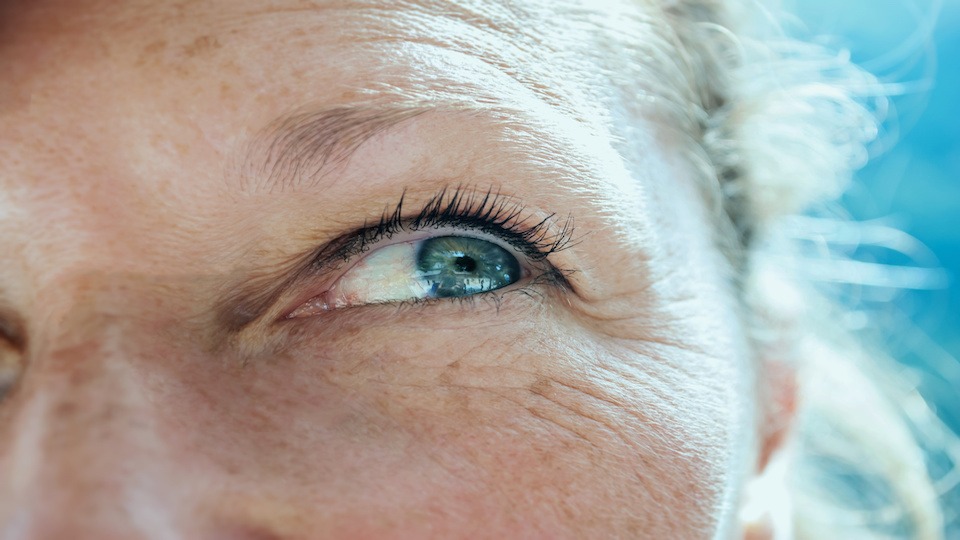It’s pretty rare for me to see a 75-year-old man break down into tears in my office. But it happened last week…I’ll tell you why. This man has macular degeneration and glaucoma, and he is progressively losing his vision. Of course, we discussed his conventional and natural treatment options…but I also asked him how he was feeling. How he was handling the emotional impact of losing his ability to see. That’s when the tears started flowing. He’s right, there are so many beautiful things to see. This article by my team at UpWellness is a useful guide to the best nutrients for healthy eyes, so you can keep yours working at their very best.
-JL
You might have heard that eating carrots is good for your eyes. While this is true, there are actually other nutrients that are even more helpful at preventing and remedying eye problems. Here is a rundown of a few you should be getting as well as some tasty ways to protect your eyes.
Flavonoids
Brightly colored red and purple fruits and vegetables get their color from a particular type of antioxidant flavonoid called anthocyanins. They protect vision by enhancing blood flow to the eyes and combatting free-radical damage. One particularly colorful fruit, bilberry, the European cousin of our blueberry, has shown promise for treating diabetic retinopathy, an eye problem caused by high blood sugar
How to get flavonoids: Eat more berries, especially blueberries, along with cherries, grapes red cabbage, beets, pomegranates, and their juice.
Lutein and zeaxanthin
Found in high concentration in the eye, these carotenoids help protect the eyes from damage from ultraviolet rays. Additionally, they neutralize free radicals that can cause harm to the eyes. Eating more foods containing lutein and zeaxanthin protects you from developing age-related macular degeneration (AMD) or cataracts.
How to get lutein and zeaxanthin: Dark and leafy greens including kale, spinach, and collard greens provide a rich supply of lutein and zeaxanthin. You can also load up on peas, squash, broccoli, corn, and eggs.
Omega 3’s
Research shows that older adults who eat fish twice a week are half as likely to develop AMD compared to people who eat no fish. The omega 3 fatty acid, DHA found in fish builds up in the eye near light-sensing nerve cells. Fish also contains another fatty acid, EPA that has additional protective benefits.
How to get omega 3’s: Consume omega 3 rich fish including salmon, sardines, black cod or herring at least once a week. Other rich sources of omega 3 include walnuts, hemp seeds, ground flax seeds, and fortified eggs. You can also take a high-quality omega 3 supplement with a daily dose of 1000 mg of DHA and EPA combined.
Vitamins C and E
These powerhouse antioxidant vitamins help to protect eyes from free radical damage. A study found that people with intermediate or advanced AMD who took a daily supplement of 500 mg of vitamin C and 400IU of vitamin E plus zinc reduced the risk of the disease progressing. Another study found that people who took a vitamin C supplement for ten years were less likely to get cataracts.
How to get vitamins C and E: Citrus fruits are rich in vitamin C and nuts and seeds contain vitamin E. However, to get enough of these it is recommended that you take 200 mg a day vitamin C and 400 IU of mixed natural tocopherols to satisfy vitamin E.
Vision Boosting Smoothies
These delicious smoothies are jam-packed with nutrients to boost eye health:
Sweet Potato and Carrot Smoothie
- 1 cup almond milk
- 1 cup mashed sweet potato
- 1 medium carrot, chopped
- 1 cup pineapple, cubed
How to make it: Place all ingredients in a blender and mix well.
Raspberry and Mango Delight
- 6 ounces of filtered water
- 1 mango
- 1 cup raspberries
- 1 small carrot, chopped
- 2 tablespoons chia seeds
- 2 cups fresh baby spinach
How to make it: Place all ingredients in a blender and mix well.
-The UpWellness Team









